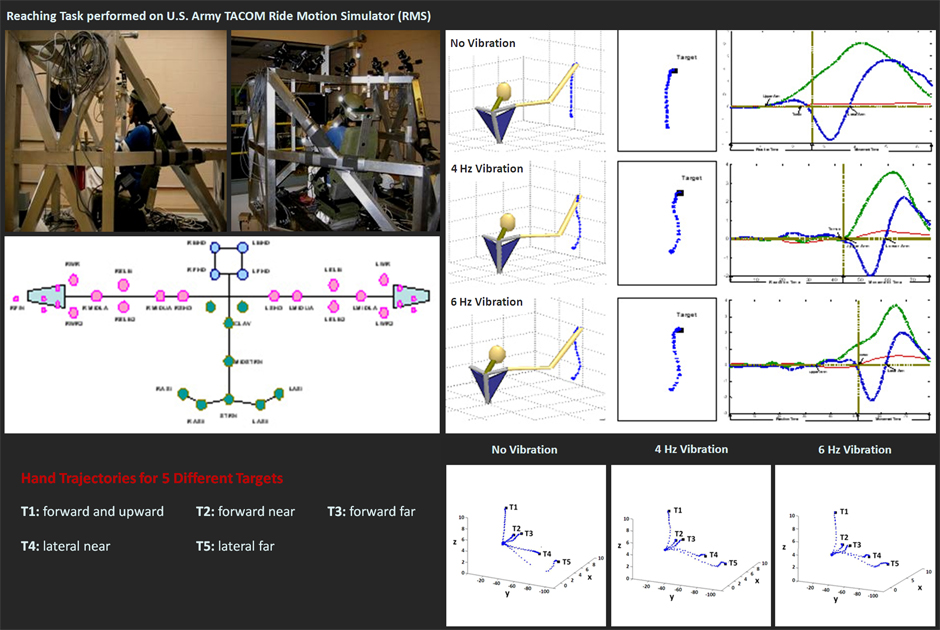Human sensitivity to vibration environments may limit the ability to operate high performance vehicles and thus the performance of the entire man-machine system. Moreover, frequent exposure to dynamic environments may cause general physical and physiological disorders. Hence, consequences of body motions under dynamic conditions must to be investigated to predict the resulting effects and to design vehicles systems that contribute to a decrease in risk and limit performance degradation. In this project, I investigated body coordination to understand reaching and pointing movement strategies in vehicle ride conditions. The objective of this study was to analyze the motion and coordination of body segments of operators reach tasks under whole-body vibration exposure.
The coordination of body link movements is likely to vary as a function of the dynamic environment characteristics (frequency, magnitude, direction). I evaluated vibration-induced changes in movement coordination through the measures of the reaction time (RT) and movement time (MT) of the right hand finger as well as the onset time of the movement of body links in target reaching tasks performed with and without whole body vibration.
The reach consisted of pointing with the right hand index finger to targets placed in front of the subject in the right hemisphere of a mockup cabin of an HMMW placed on the platform of the Ride Motion Simulator (RMS) at the U.S. Army TACOM. Seven targets placed within reach distance in the following locations were used in this analysis: overhead, forward and upward (45° elevation), forward near and far (elbow level), lateral (in frontal plane) upward (45° elevation) near, lateral near and far (elbow level). Thirty six reflective markers were placed on the upper body links to define the torso, the upper arm, and the lower arm.
